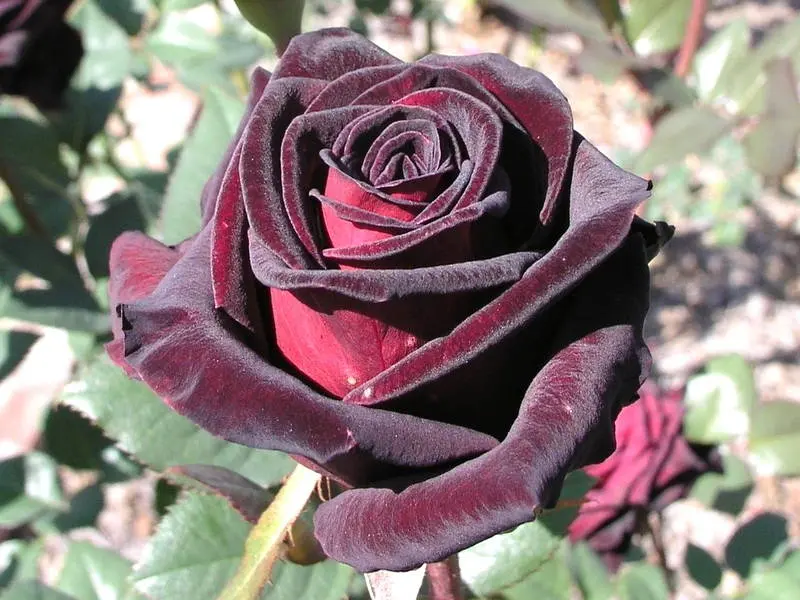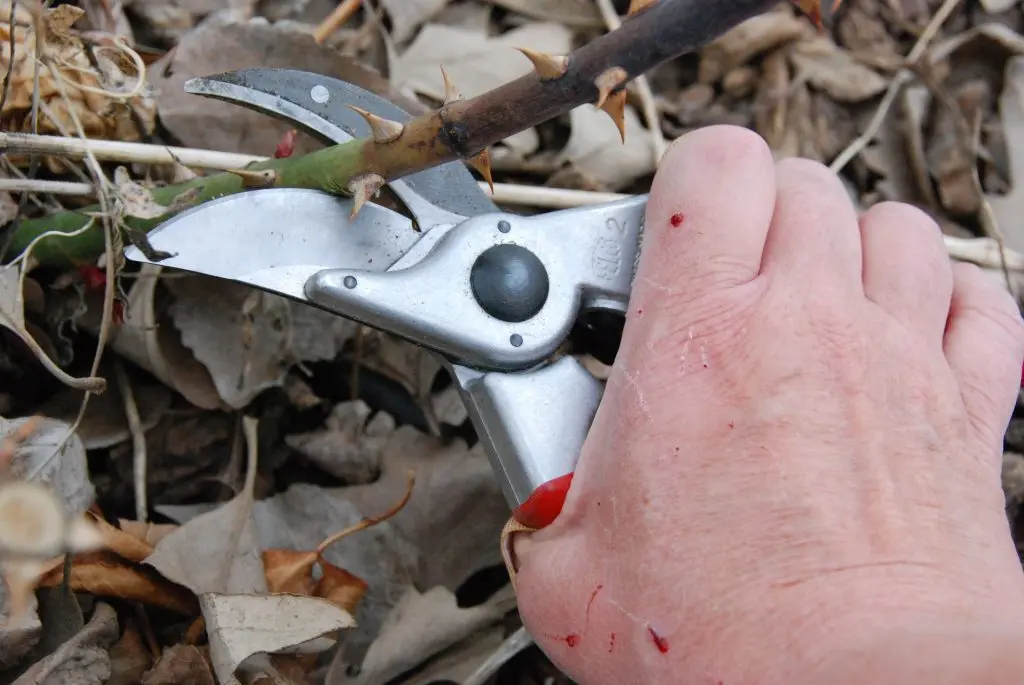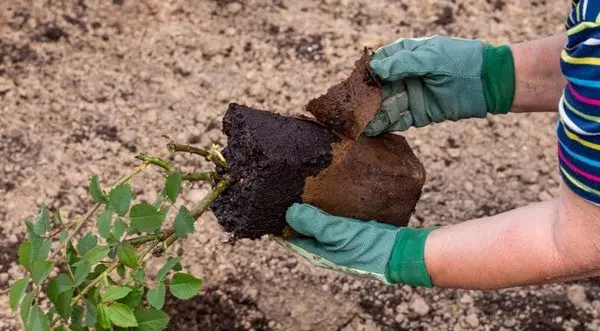Contents
For many years, breeders have been tirelessly working on breeding natural black roses, but so far there are only conditionally black flowers that are black in the bud stage, but become maroon with a pronounced dark tint as they bloom. Rose Black Baccarat, a tea hybrid of French selection, is considered the blackest of all existing today. Every grower considers it a matter of honor to have this treasure in his garden. You will learn how to grow such an unusual flower in our climate from our article.
Description
Rose variety Black Baccara was bred by French breeders in 2004. This is a tea-hybrid form with a maroon color, as close as possible to black. The rose bud is goblet-shaped, tall, absolutely black, but at the moment of opening the upper part of the petals takes on the shade of red wine. The flower is not very large (up to 10 cm in diameter), the petals are velvet, black below, taking on a curved triangular shape along the edge. The aroma of the flower is light, barely perceptible.
The bush is compact (up to 80 cm in height). Shoots are green, with small thorns. The leaves are dark green above and reddish below. The variety is characterized by high disease resistance.
Winter hardiness is low (it freezes at -10 ° C), therefore it requires shelter for the winter. The flowering period is long, the flower retains its shape for a long time, does not lose color in the sun and after rain, does not fade in bouquets for a long time.
Video “Description of rose Baccarat”
From the video you will learn what this rose variety looks like and how it differs from other representatives of these bushes.
Planting and care
Rose seedlings can be planted in the ground in spring and autumn. In regions with late and mild winters, it is advisable to plant in the fall, from mid-September to the first decade of October, then next spring the plant will begin vegetative growth in time. Grafted roses are also planted in autumn. In areas where winters are long and harsh, the best time to plant is spring, but in this case, you should expect the bush to lag behind in growth for a couple of weeks.
Before digging a hole for planting, the soil is dug up and mixed with fertilizers (humus, compost). Peat and sand are added to improve drainage properties. To straighten the roots, they are soaked in warm water or a solution of potassium permanganate before planting. Next, the seedling is placed in a hole so that when falling asleep with earth, the root neck is deepened by 2-3 cm.
Rose care consists of standard activities: watering, weeding and loosening the soil, forming pruning, preventive treatment from pests and diseases, top dressing. Watering is desirable to combine with top dressing:
- in the spring prepare a solution with nitrogen fertilizers (mixtures);
- during the active growth of shoots – ready-made preparations with microelements;
- in the bud formation phase – liquid mullein or droppings;
- after flowering – potash fertilizers.

You need to water under the root, as moisture on the leaves can lead to the development of fungal diseases. For irrigation, use settled water at room temperature, but in no case cold (from a well or from a tap).
Planting site and soil requirements
Unlike other varieties of roses, Black Baccara is not very fond of open sunny areas. In addition, in the shade, its petals become more velvety, darker, and the aroma is more pronounced. This does not mean that it is impossible to plant a rose in the sun, it just grows better in partial shade. As for the quality of the soil, it should be loose and acidic. The acid helps this rose keep its dark color. Even flower growers who have been growing the Black Baccara variety for a long time admit that sometimes a little citric acid is added to the water for irrigation in order for the flower to have such an unusual color.
Trimming
For roses of this variety, two pruning is required: in spring and autumn. Spring pruning is carried out in order to stimulate abundant flowering, as well as to remove damaged, diseased and frozen shoots. It is very important for the procedure to choose the right moment – when the kidneys have already woken up, but have not yet begun to bloom. If, after removing the shelter, you saw that the bush was still sleeping, then pruning should be postponed for 5-10 days until the movement of juices in the stems begins.
When performing spring pruning, you should first remove all dried branches at the roots with a pruner, and then carry out a formative pruning of healthy branches. To do this, use a tool to cut off the tops at an angle so that 3-4 buds remain on the shoot. Leaving more than 5 buds is not recommended, as the flowers will be small. During the entire summer period, wilted flowers should be cut from the bush as they appear.
 Autumn pruning prepares plants for winter. 1-2 weeks after the end of flowering, it is necessary to cut off all the shoots that bloomed this year from the bush, and shorten the rest (those that grew during the summer) to a height of 40-50 cm. Immediately before the cold weather, rose bushes should be covered. To do this, not crumbling leaves are cut off from the shoots, the root neck is sprinkled with humus so that a mound 30-40 cm high is formed – the humus releases heat, and thereby warms the roots of the plant. Next, a frame is constructed above the bush, on which a dense covering material is laid.
Autumn pruning prepares plants for winter. 1-2 weeks after the end of flowering, it is necessary to cut off all the shoots that bloomed this year from the bush, and shorten the rest (those that grew during the summer) to a height of 40-50 cm. Immediately before the cold weather, rose bushes should be covered. To do this, not crumbling leaves are cut off from the shoots, the root neck is sprinkled with humus so that a mound 30-40 cm high is formed – the humus releases heat, and thereby warms the roots of the plant. Next, a frame is constructed above the bush, on which a dense covering material is laid.
Diseases and pests
Despite the rather high immunity of the rose to diseases, sometimes it becomes infected with fungal diseases: black spot, powdery mildew, rust. The development of these ailments is facilitated by high humidity, and if the summer turned out to be rainy, then there is a high probability that the plants will get sick. To prevent this from happening, in the spring it is recommended to treat the bushes with a solution of copper sulfate, Bordeaux liquid, or universal flower remedies: Hom, Topaz.
Also, harmful insects can cause significant damage to the rose, the fight against which consists in the use of insecticides:
- rose cicada (feeds on the juice of the leaves, after which they begin to hurt and dry out) – means of struggle: “Zolon”, “Decis” (spraying is carried out before flowering);
- green aphid (located in colonies on the lower part of the leaves and sucks out the juices) – spraying with preparations helps: “Aktellik”, “Alatar”;
- thrips (planted in a flower, after which it withers and turns black at the edges) – preparations: “Confidor”, “Vermitek”.
Reproduction
Two methods are acceptable for propagating roses: dividing the bush and cuttings. But since the bush grows rather slowly, reproduction by dividing the rhizome is not desirable. In exceptional cases, a bush older than 5 years can be divided into two parts, but you need to be prepared for the fact that the plant will slow down its growth and stop flowering.
Cuttings are the easiest and most affordable way to propagate black roses. To teach the cuttings, shoots 12-15 cm long are cut. The blanks should be taken from healthy young shoots formed during the summer. The cut is made at an angle below the kidney, and in the upper part above the kidney. The cuttings are planted in moistened soil in boxes, or in a flower bed under shelter (jar, plastic bottle). Rooted cuttings are transplanted next spring, after preliminary hardening.
The black rose is highly valued and is very popular with flower growers. It is shade tolerant, so it can be placed anywhere in the garden. Landscape designers often use a flower for planting in flower beds in combination with contrasting roses. In addition, the black rose feels great in pots and containers, which allows it to be grown indoors.
Video “Diseases of roses”
From the video you will learn about the most common diseases of roses.










